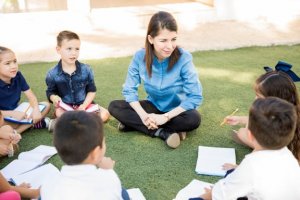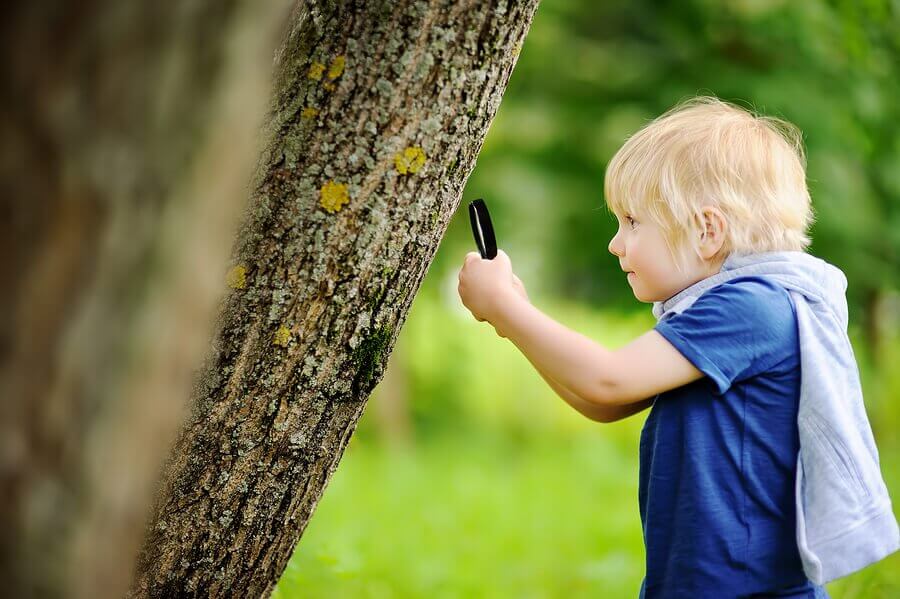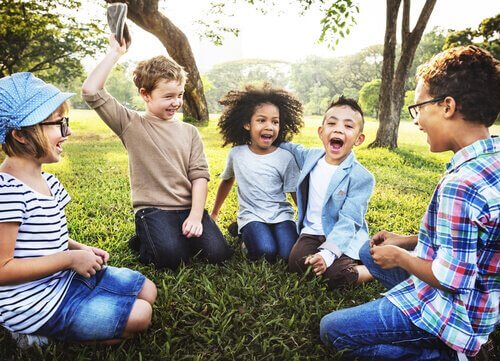What Is Outdoor Education?


Reviewed and approved by the psychologist María Alejandra Castro Arbeláez
The generations are changing, and there’s no doubt about that. Nowadays, children get bored with conventional teaching methods. That’s why many schools and parents are using what’s known as outdoor education.
Would you like to know what that is? Then keep reading this article.
What is outdoor education?
Until a few years ago, many believed that the only way to learn was in a classroom, where children needed to pay attention and focus on the blackboard in front of them.
However, all of that has changed. Although there’s still class, more and more schools are opting for outdoor education.
Basically, it’s a concept where nature and taking care of the environment are a very important part of teaching. In addition, kids are allowed to be more creative in this type of education. They can breathe in fresh air, and they can play sports without even realizing it.
Outdoor education can take place in a park, the school yard, an orchard, the beach, the countryside, in the forest, on the mountain – wherever you want!
This model may sound new in some countries, but the truth is that many countries already use this. For example, Germany, Norway, Finland and Sweden commonly use this model, both in private and public schools.
Purpose of outdoor education
The main objective of this method is for children to have full contact with nature starting from a young age. They can do this even if they live in a big city.
This relationship with the environment allows for kids to improve their physical and mental development. This is because they’re stimulated by what they see around them without affecting their “traditional” learning. That is, learning math, literature, history, etc.

In a stage as crucial as childhood, it’s important for students to establish the pillars that will support them during adulthood.
Outdoor education doesn’t neglect the normal subjects, but includes other matters. For example, it emphasizes creativity, self-esteem, autonomy, entrepreneurial spirit, teamwork, self-confidence, respect, and protecting natural resources.
How to experience outdoor education
It’s a fact that children in large cities have significantly less contact with nature. This makes them more addicted to technology and screens. In addition, it greatly reduces the relationships they have with other kids their own age.
Therefore, outdoor education is an excellent way to help them get in touch with their environment. Mainly, it offers them larger spaces to interact than in a classroom.
Some children go to summer camps outside of their city, then return completely changed for the better. While this complements education, it’s not enough.
When kids are small, they need space to move around as much as possible. Schools that use outdoor education do this for their students.
How are the classes in these schools?
The premise of these institutions is that “nature is the classroom” and try to have most of the day outdoors. They can take advantage of a garden, have lunch in the shade of a large tree, analyze insects, birdwatch, learn agriculture and livestock, and exercise on the lawn.
Likewise, there are also outdoor classrooms with roofs and walls where they do other activities. On the other hand, they provide shelter when it’s very hot or cold, or when it’s raining or snowing.

If you want to take your children to a school that offers outdoor education but aren’t sure if it’s a good fit for them, you can set up a visit with one.
Classes only have a small group of children, no more than 25, of different ages. There, they learn different subjects that are all connected to each other.
This means that there is no math class, biology class or literature class. On the contrary, they learn it all as a whole, combining all the concepts.
Of course, there is also free time to play, have adventures, learn languages, music, art, and everything kids need to learn and grow. In short, they’re a very good alternative, and are becoming more popular in the world.
The generations are changing, and there’s no doubt about that. Nowadays, children get bored with conventional teaching methods. That’s why many schools and parents are using what’s known as outdoor education.
Would you like to know what that is? Then keep reading this article.
What is outdoor education?
Until a few years ago, many believed that the only way to learn was in a classroom, where children needed to pay attention and focus on the blackboard in front of them.
However, all of that has changed. Although there’s still class, more and more schools are opting for outdoor education.
Basically, it’s a concept where nature and taking care of the environment are a very important part of teaching. In addition, kids are allowed to be more creative in this type of education. They can breathe in fresh air, and they can play sports without even realizing it.
Outdoor education can take place in a park, the school yard, an orchard, the beach, the countryside, in the forest, on the mountain – wherever you want!
This model may sound new in some countries, but the truth is that many countries already use this. For example, Germany, Norway, Finland and Sweden commonly use this model, both in private and public schools.
Purpose of outdoor education
The main objective of this method is for children to have full contact with nature starting from a young age. They can do this even if they live in a big city.
This relationship with the environment allows for kids to improve their physical and mental development. This is because they’re stimulated by what they see around them without affecting their “traditional” learning. That is, learning math, literature, history, etc.

In a stage as crucial as childhood, it’s important for students to establish the pillars that will support them during adulthood.
Outdoor education doesn’t neglect the normal subjects, but includes other matters. For example, it emphasizes creativity, self-esteem, autonomy, entrepreneurial spirit, teamwork, self-confidence, respect, and protecting natural resources.
How to experience outdoor education
It’s a fact that children in large cities have significantly less contact with nature. This makes them more addicted to technology and screens. In addition, it greatly reduces the relationships they have with other kids their own age.
Therefore, outdoor education is an excellent way to help them get in touch with their environment. Mainly, it offers them larger spaces to interact than in a classroom.
Some children go to summer camps outside of their city, then return completely changed for the better. While this complements education, it’s not enough.
When kids are small, they need space to move around as much as possible. Schools that use outdoor education do this for their students.
How are the classes in these schools?
The premise of these institutions is that “nature is the classroom” and try to have most of the day outdoors. They can take advantage of a garden, have lunch in the shade of a large tree, analyze insects, birdwatch, learn agriculture and livestock, and exercise on the lawn.
Likewise, there are also outdoor classrooms with roofs and walls where they do other activities. On the other hand, they provide shelter when it’s very hot or cold, or when it’s raining or snowing.

If you want to take your children to a school that offers outdoor education but aren’t sure if it’s a good fit for them, you can set up a visit with one.
Classes only have a small group of children, no more than 25, of different ages. There, they learn different subjects that are all connected to each other.
This means that there is no math class, biology class or literature class. On the contrary, they learn it all as a whole, combining all the concepts.
Of course, there is also free time to play, have adventures, learn languages, music, art, and everything kids need to learn and grow. In short, they’re a very good alternative, and are becoming more popular in the world.
All cited sources were thoroughly reviewed by our team to ensure their quality, reliability, currency, and validity. The bibliography of this article was considered reliable and of academic or scientific accuracy.
- Bruchner, P. (2012). Escuelas infantiles al aire libre. Cuadernos de pedagogía, 420, 26-29. https://bosquescuela.com/wp-content/uploads/2012/01/Art%C3%ADculo_Escuelas-infantiles-al-aire-libre_Cuadernos-de-Pedagog%C3%ADa1.pdf
- Freire,Heike. (2011):Educarenverde.Ideas para acercar a niños y niñas a la naturaleza.Barcelona: Graó.
- Gabrielsen, M. A., & Holtzer, C. (1971). Educación al aire libre.
This text is provided for informational purposes only and does not replace consultation with a professional. If in doubt, consult your specialist.








